
Wine Culture and Information since 2002 - Volume 22
 Wine Culture and Information since 2002 - Volume 22 |
|
Comparing BaroloOne of the most famous wines of Italian enology, defined by many as “king of wines, wine of kings”, Barolo is the magnificent Langhe's wine produced with Nebbiolo grape |
|
In the vast Italian wine making scene, Barolo is among the brightest stars, son of one of the greatest grapes of the rich ampelographic heritage of Italy: Nebbiolo. Barolo is not the only “son” of Nebbiolo, indeed, it certainly is the wine which was the first one to make this prestigious grape from Piedmont renowned all over the world. Also thanks to the enological culture of Piedmont - a pretty rare case in Italy - Barolo is one of the few Italian wines to be classified according to specific cru and in the labels is mentioned, most of the cases, the name of the vineyard or commune as well. The identification of Barolo's crus begins thanks to the important contribution of Renato Ratti, the famous wine maker who, in the 1970s, does scrupulous researches on the territory, on vineyards and on the many communes: a meticulous and fundamental job which will allow the creation of the so called “Map of Barolo”, in which are defined the production areas of this glorious wine. Nebbiolo - from which it is produced Barolo - is a pretty demanding grape, both according to a viticultural point of view, as well as according to environment. Nebbiolo tends to ripe later than other varieties, usually harvested in autumn, when vineyards are covered by fog (nebbia in Italian), a phenomenon from which takes its name. Nebbiolo is a difficult grape also in the wines it makes, with a personality on their own which is hardly found in other wines. With its richness in polyphenols and tannins - among the richest grapes known - wines produced with Nebbiolo are characterized by a robust body as well as for their elegance: two qualities which make usually define these wines as an iron fist in a velvety glove. Another typical quality of Nebbiolo is its high acidity which contributes to the “harshness” of its wines however giving a truly personal crispness. For these reasons, wines produced with Nebbiolo need a proper quantity of alcohol and a proper period of aging in wood in order to obtain a gustatory balance.
|
|
Barolo, besides its famous and particular grape, is also subject of debates both from producers and wine lovers. The reason of these debates is not determined by Nebbiolo and by its characteristics, indeed by the method with which it is being produced Barolo. Not the whole production method, but just one “detail” which could be defined as the wood factor. Barolo is traditionally aged in large casks, whereas in recent times, some producers have introduced the “modern” barrique, marking a strong division. Traditionalists prefer the use of large casks, whereas modernists prefer barrique: definitions which are used both for producers and wine lovers. Despite in recent times the “debate” is getting less and less strong, to many this is still a fundamental point, however the evidence of facts has proven with time both methods make excellent Barolos, undoubtedly different one from another - of course - however both extraordinary, so extraordinary like the Barolo can be.
In our comparative tasting about Barolo we will try to understand the differences which are the cause of this “debate”: cask and barrique. It would have certainly been interesting - as well as didactic - to understand the differences among the many crus, however, because of the differences found in the wines produced in the many, this would certainly take more than three wines. The first wine of the tasting is Conterno Fantino's Barolo Sorì Ginestra, aged in barrique for 24 months. The second wine of our comparative tasting is Massolino's Barolo Riserva Vigna Rionda, aged in large casks for 36 months. The last wine represents an “in between”, as it is produced by using both techniques: Abbona Marziano's Barolo Pressenda, aged for 12 months in barrique and 18 months in large cask. Undoubtedly, three magnificent Barolos, however each different one from another. The three wines will be served at a temperature of 18° C (64° F) and will be served - as usual - in three ISO tasting glasses.
|
||||||||
|
Despite Nebbiolo is a grape rich in polyphenols, it is however poor in coloring substances, therefore in its wines will rarely be seen deep colors and also transparency will be pretty high when compared to other red wines. This characteristic however depends on the quality of grapes and wine making, something which can be witnessed by many wines produced with Nebbiolo in which are observed intense colors and low transparency. Of course, also in the appearance of Barolo we will find these qualities. During its youth, Barolo shows intense and brilliant ruby red colors and the nuance will tend to garnet red. With time, Barolo will show, even after few years, garnet red colors and, sometimes, brick red, a color which is generally observed in nuances even in the first phases of aging. In general terms, the transparency of Barolo is pretty high, however in some cases it can also be low and with time it will however tend to increase because of the sedimentation of coloring substances. The first wine of which we will examine appearance is Massolino's Barolo Riserva Vigna Rionda. By holding the glass tilted over a white surface - such as a tablecloth or a sheet of paper - we will observe color and transparency. The color of the wine, observed at the base of the glass, is brilliant ruby red with a pretty evident transparency. By observing the liquid mass to the edge of the glass, we will examine the nuance of the wine which will show a brick red color. Let's now pass to the evaluation of the second wine: Abbona Marziano's Barolo Pressenda. The color of this Barolo is pretty similar to the previous wine, with a brilliant ruby red color, an evident transparency and brick red nuances. Let's now pass to the third wine - Conterno Fantino's Barolo Sorì Ginestra - the only of the three wines to be completely aged in barrique. The color of this Barolo is brilliant ruby red and, as opposed to the previous wines, it shows a lower transparency, and differences will be observed in nuances as well, in this case garnet red.
|
|
Olfactory qualities of Barolo are elegant and powerful at the same time. With time, this extraordinary wine does not disappoint the taster with its complex and rich aromas. A world full of fruits and flowers that, with time, get enriched and turn into incredible aromas continuously inviting to smell the glass. Among the most typical fruit aromas in Barolo are mentioned cherry, plum and raspberry, whereas as for flower aromas, violet and rose. Barolo, according to production disciplinary, before being commercialized, must age for at least three years - five for the reserve style - of which at least two in oak or chestnut casks. The choice of type and volume of cask directly influences Barolo's olfactory qualities: a Barolo aged in cask develops aromas different from the one aged in barrique. Among the most typical tertiary aromas developing in a Barolo after years of aging are mentioned tobacco, licorice, chocolate, leather, tar and cocoa as well as truffle and mushrooms. The world of aromatic herbs is represented by thyme and mint, whereas the most frequent balsamic aroma is menthol. The first wine we will examine is Massolino's Barolo Riserva Vigna Rionda. By holding the glass in vertical position and without swirling, we will begin by evaluating opening aromas, that is the aromas which can easily volatilize with a small quantity of oxygen. From the glass will be perceived aromas of cherry and violet, the two most typical olfactory characteristics of Nebbiolo and Barolo. We will now proceed by swirling the glass in order to allow the oxygenation of wine and favoring the volatilization of “heavier” aromatic substances, that is substances requiring a higher quantity of oxygen in order to be perceived. After the second smell, it will be possible to perceive from the glass aromas of plum and raspberry - also in this case characteristic of Nebbiolo and Barolo - as well as clean and intense aromas of rose and blackberry, followed by more complex aromas of vanilla, tobacco, licorice, cinnamon, cocoa and pink pepper. It should also be noticed the pleasing hint of menthol. Let's now pass to the second wine of our comparative tasting: Abbona Marziano's Barolo Pressenda. Opening aromas are characterized by cherry, raspberry and violet, whereas the second smell - after having swirled the glass - will reveal aromas of plum, rose, strawberry and cyclamen followed by aromas of vanilla, tobacco, licorice, cinnamon, cocoa, cigar box, mace and the balsamic hint of menthol. Whereas the previous wine was completely aged in cask, in this second wine the aging was done both in cask and in barrique: it should be compared the difference and the intensity of tertiary aromas. Let's now pass to the third wine of the tasting - Conterno Fantino's Barolo Sorì Ginestra - the only one of the three to be aged in barrique. Opening aromas are characterized by cherry, plum, blackberry and violet followed by aromas of rose, vanilla, licorice, tobacco, cocoa, mace, menthol and thyme. It should be compared the aromatic impact of this wine with the previous ones: differences among aging in cask and in barrique are evident, however very elegant in both cases.
|
||||
|
An iron fist in a velvety glove: this is the main sensation perceived in the mouth when a wine produced with Nebbiolo, in particular Barolo, is tasted. Whoever expects from a wine roundness and smoothness, will probably be disappointed by Barolo. Robust structure scratched by a pleasing crispness is opposed to the roundness of alcohol and the smoothness of the aging time gives Barolo: a wine which cannot certainly be defined as “easy”. Nevertheless, Barolo's elegance and class, in its balance and personality - last but not the least, its body - are always a good surprise for the palate of tasters. It is not by chance Barolo is one of the many wines defined as “wine of the king, king of wines”, thanks to its personality, elegance and structure, it is an excellent companion of rich and refined dishes. The evident crispness and astringency in Barolo require, in order to be balanced, a proper quantity of alcohol and the average volume is typically of 13.5%. We will begin the gustatory analysis from Massolino's Barolo Riserva Vigna Rionda. The attack of this Barolo confirms our expectations: full body and crispness with the pseudo caloric sensation of alcohol. A robust structure, however characterized by a pleasing roundness - given by the aging in cask and alcohol - very elegant and very correspondent to the nose. Let's now pass to the second wine of our comparative tasting: Abbona Marziano's Barolo Pressenda. The attack of this Barolo is characterized, once again, by a robust structure and pleasing crispness, however roundness will be more evident than the previous wine. The attack of the third wine - Conterno Fantino's Barolo Sorì Ginestra - is not different from the previous wines: full body and pleasing crispness well balanced by alcohol and roundness of the aging in cask, in this case 24 months in barrique. Once again, let's taste all the three the wines in order to compare gustatory differences, in particular roundness in function of the type of cask used.
|
|
Barolo is a magnificent wine - and this is not anything new - and the three exemplars used in our comparative tasting fully confirm this. The finish of Massolino's Barolo Riserva Vigna Rionda is persistent with long and clean flavors of cherry, plum and raspberry: a finish which can be defined typical for Barolo. Also the finish of the second wine - Abbona Marziano's Barolo Pressenda - is very persistent with long flavors of cherry, raspberry and plum. The finish of Conterno Fantino's Barolo Sorì Ginestra is very persistent, just like the previous wines, however with more “robust” flavors of cherry and plum. It should be noticed how in all the three Barolos of our comparative tasting the perception of structure is present in the final phases as well, in particular, it should be noticed the finish according to the type of cask used for the aging. Barolo, despite cask and barrique give different organoleptic qualities, is however a wine of great elegance and class: this could certainly be enough to bring “peace” among traditionalists and modernists, hopefully ideally meeting in the magnificence of a good glass of Barolo.
|
Wines of the Month |
|
|
|
Score legend Prices are to be considered as indicative. Prices may vary according to the country or the shop where wines are bought |

|
|
Sant'Antimo Cabernet Sauvignon 2004 |
|
| Molino di Sant'Antimo (Tuscany, Italy) | |
| Grapes: Cabernet Sauvignon | |
| Price: € 8.00 | Score: |
| This wine shows a brilliant ruby red color and nuances of ruby red, moderate transparency. The nose denotes intense, clean, pleasing and refined aromas that start with hints of plum, black currant and black cherry followed by aromas of blueberry, violet, vanilla, bell pepper, cinnamon and menthol. The mouth has good correspondence to the nose, a tannic attack and pleasing roundness, however balanced by alcohol, good body, intense flavors. The finish is persistent with flavors of plum, black cherry and black currant. Sant'Antimo Cabernet Sauvignon ages for 2 months in barrique. | |
| Food Match: Broiled meat and barbecue, Roasted meat, Stewed meat with mushrooms | |
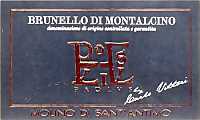
|
|
Brunello di Montalcino 2001 |
|
| Molino di Sant'Antimo (Tuscany, Italy) | |
| Grapes: Sangiovese Grosso | |
| Price: € 28.00 | Score: |
| This Brunello di Montalcino shows a brilliant ruby red color and nuances of garnet red, moderate transparency. The nose reveals intense, clean, pleasing and refined aromas that start with hints of black cherry and plum followed by aromas of violet, vanilla, raspberry, tobacco, licorice, chocolate, cinnamon, mace and menthol. The mouth has good correspondence to the nose, a tannic attack and however balanced by alcohol, full body, intense flavors. The finish is persistent with flavors of black cherry and plum. This Brunello di Montalcino ages for 3 months in cask followed by 6 months of aging in bottle. | |
| Food Match: Game, Roasted meat, Braised and stewed meat, Hard cheese | |
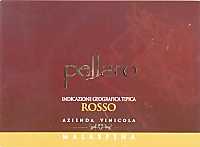
|
|
Pellaro 2003 |
|
| Malaspina (Calabria, Italy) | |
| Grapes: Nerello Cappuccio (50%), Nocera (30%), Cabernet Sauvignon (20%) | |
| Price: € 11.00 | Score: |
| Pellaro shows a brilliant ruby red color and nuances of garnet red, moderate transparency. The nose reveals intense, clean, pleasing and refined aromas which start with hints of plum, blackberry and black cherry followed by aromas of violet, cinchona, vanilla and carob. The mouth has good correspondence to the nose, a tannic attack and however balanced by alcohol, good body, intense flavors. The finish is persistent with flavors of plum and blackberry. Pellaro ages for 10 months in barrique. | |
| Food Match: Broiled meat and barbecue, Roasted meat, Stewed meat | |

|
|
Patros Pietro 2003 |
|
| Malaspina (Calabria, Italy) | |
| Grapes: Magliocco Canino (80%), Cabernet Sauvignon (20%) | |
| Price: € 20.00 | Score: |
| Patros Pietro shows a brilliant ruby red color and nuances of garnet red, moderate transparency. The nose reveals intense, clean, pleasing and refined aromas that start with hints of black cherry, plum and raspberry followed by aromas of violet, cyclamen, strawberry, vanilla, carob and menthol. The mouth has good correspondence to the nose, a tannic attack and pleasing roundness, however balanced by alcohol, good body, intense flavors. The finish is persistent with flavors of black cherry and plum. Patros Pietro ages for 6 months in barrique. | |
| Food Match: Roasted meat, Braised and stewed meat with mushrooms | |
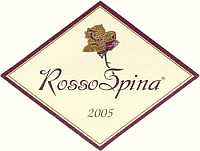
|
|
Rosso Spina 2005 |
|
| Cantina La Spina (Umbria, Italy) | |
| Grapes: Montepulciano (90%), Merlot (5%), Gamay (5%) | |
| Price: € 14.00 | Score: |
| Rosso Spina shows an intense ruby red color and nuances of ruby red, little transparency. The nose denotes intense, clean, pleasing and refined aromas that start with hints of black cherry, plum and blueberry followed by aromas of violet, vanilla, rose, raspberry, carob and cinnamon. The mouth has good correspondence to the nose, a tannic attack and however balanced by alcohol, good body, intense flavors. The finish is persistent with flavors of black cherry, plum and raspberry. Rosso Spina ages for 12 months in barrique. | |
| Food Match: Roasted meat, Broiled meat and barbecue, Stewed meat, Hard cheese | |
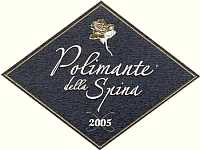
|
|
Polimante della Spina 2005 |
|
| Cantina La Spina (Umbria, Italy) | |
| Grapes: Merlot (70%), Gamay (30%) | |
| Price: € 15.00 | Score: |
| This wine shows an intense ruby red color and nuances of ruby red, little transparency. The nose reveals intense, clean, pleasing and refined aromas that start with hints of black currant, black cherry and plum followed by aromas of blueberry, vanilla, bell pepper, pink pepper, tobacco, chocolate and eucalyptus. The mouth has good correspondence to the nose, a tannic attack and however balanced by alcohol, full body, intense flavors, pleasing roundness. The finish is persistent with flavors of black cherry, black currant and plum. Polimante della Spina ages for 12 months in barrique. | |
| Food Match: Game, Braised and stewed meat, Roasted meat, Hard cheese | |
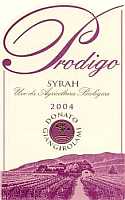
|
|
Prodigo 2004 |
|
| Donato Giangirolami (Latium, Italy) | |
| Grapes: Syrah | |
| Price: € 4.00 | Score: |
| The wine shows an intense ruby red color and nuances of ruby red, little transparency. The nose denotes intense, clean and pleasing aromas which start with hints of plum, black cherry and blueberry followed by aromas of vanilla, violet and carob. The mouth has good correspondence to the nose, a slightly tannic attack, however balanced by alcohol, good body, intense flavors. The finish is persistent with flavors of plum and black cherry. Prodigo ages for 6 months in barrique followed by 4-6 months of aging in bottle. | |
| Food Match: Stewed meat, Roasted meat, Broiled meat and barbecue | |
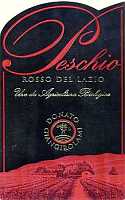
|
|
Peschio 2005 |
|
| Donato Giangirolami (Latium, Italy) | |
| Grapes: Cabernet Sauvignon (50%), Merlot (25%), Syrah (25%) | |
| Price: € 4.35 | Score: |
| Peschio shows an intense ruby red color and nuances of ruby red, little transparency. The nose reveals intense, clean and pleasing aromas which start with hints of black cherry and plum followed by aromas of blueberry, black currant, violet, vanilla and chocolate. The mouth has good correspondence to the nose, a tannic attack and however balanced by alcohol, good body, intense flavors. The finish is persistent with flavors of black cherry and plum. Peschio ages for 7-8 months in barrique followed by 7-8 months in bottle. | |
| Food Match: Broiled meat and barbecue, Roasted meat, Stewed meat | |
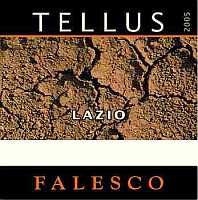
|
|
Tellus 2005 |
|
| Falesco (Umbria, Italy) | |
| Grapes: Merlot (50%), Syrah (50%) | |
| Price: € 6.48 | Score: |
| The wine shows an intense ruby red color and nuances of ruby red, little transparency. The nose denotes intense, clean, pleasing and refined aromas that start with hints of plum, black cherry and black currant followed by aromas of blueberry, raspberry, violet and carob. The mouth has good correspondence to the nose, a tannic attack and however balanced by alcohol, good body, intense flavors. The finish is persistent with flavors of black cherry and blueberry. The Syrah used for the production of Tellus ages for one month in barrique whereas the Merlot ages in steel tanks. | |
| Food Match: Broiled meat and barbecue, Stewed meat | |
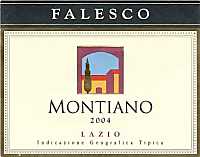
|
|
Montiano 2004 |
|
| Falesco (Umbria, Italy) | |
| Grapes: Merlot | |
| Price: € 25.80 | Score: |
| Montiano shows a deep ruby red color and nuances of ruby red, little transparency. The nose reveals intense, clean, pleasing, refined and elegant aromas which start with hints of black cherry, black currant and plum followed by aromas of violet, vanilla, blueberry, blackberry, tobacco, licorice, mace, eucalyptus and chocolate. The mouth has good correspondence to the nose, a tannic attack and pleasing roundness, however balanced by alcohol, full body, intense flavors. The finish is persistent with flavors of black cherry, black currant and plum. Montiano ages for 12 months in barrique. | |
| Food Match: Game, Roasted meat, Braised and stewed meat, Hard cheese | |
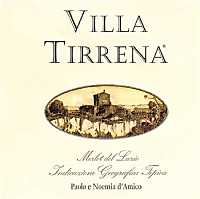
|
|
Villa Tirrena 2004 |
|
| Paolo e Noemi d'Amico (Latium, Italy) | |
| Grapes: Merlot | |
| Price: € 6.90 | Score: |
| Villa Tirrena shows a brilliant ruby red color and nuances of ruby red, moderate transparency. The nose denotes intense, clean and pleasing aromas that start with hints of black cherry, black currant and plum followed by aromas of vanilla, violet, tobacco and carob. The mouth has good correspondence to the nose, a slightly tannic attack and however balanced by alcohol, good body, intense flavors. The finish is persistent with flavors of black cherry and plum. Villa Tirrena ages for 8 months in barrique followed by 4 months of aging in bottle. | |
| Food Match: Stuffed pasta, Roasted meat, Broiled meat and barbecue | |
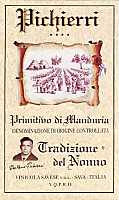
|
|
Primitivo di Manduria Tradizione del Nonno 2004 |
|
| Vinicola Savese (Apulia, Italy) | |
| Grapes: Primitivo | |
| Price: € 16.00 | Score: |
| This Primitivo di Manduria shows an intense ruby red color and nuances of garnet red, little transparency. The nose denotes intense, clean, pleasing and refined aromas that start with hints of plum, blackberry and black cherry followed by aromas of dried violet, vanilla, tamarind, tobacco, licorice, mace, carob and menthol. The mouth has good correspondence to the nose, a tannic attack and pleasing roundness, however balanced by alcohol, full body, intense flavors. The finish is persistent with flavors of plum, blackberry and black cherry. Part of this Primitivo ages in barrique. | |
| Food Match: Game, Roasted meat, Braised and stewed meat, Hard cheese | |
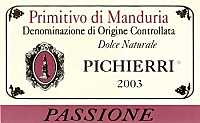
|
|
Primitivo di Manduria Dolce Naturale Passione 2003 |
|
| Vinicola Savese (Apulia, Italy) | |
| Grapes: Primitivo | |
| Price: € 23.00 - 500ml | Score: |
| The wine shows a deep ruby red color and nuances of garnet red, little transparency. The nose denotes intense, clean, pleasing and refined aromas that start with hints of blackberry jam, black cherry jam and prune followed by aromas of dried violet, vanilla, tobacco, tamarind, nail polish, chocolate and mace. The mouth has good correspondence to the nose, a sweet and tannic attack, however balanced by alcohol, full body, intense flavors. The finish is persistent with flavors of blackberry jam and prune. Primitivo di Manduria Passione ages for 8 months barrique and in earthenware containers. | |
| Food Match: Chocolate desserts, Hard cheese, Dried fruit tarts | |
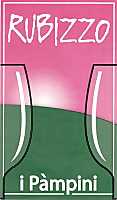
|
|
Rubizzo 2005 |
|
| I Pampini (Latium, Italy) | |
| Grapes: Merlot | |
| Price: € 5.50 | Score: |
| Rubizzo shows an intense ruby red color and nuances of purple red, little transparency. The nose reveals intense, clean and pleasing aromas that start with hints of black cherry, blueberry and black currant followed by aromas of plum, violet and carob. The mouth has good correspondence to the nose, a slightly tannic attack and however balanced by alcohol, good body, intense flavors. The finish is pretty persistent with flavors of black cherry and blueberry. Rubizzo ages for few months in cask. | |
| Food Match: Pasta and legumes, Sauteed meat | |
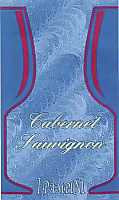
|
|
Cabernet Sauvignon 2005 |
|
| I Pampini (Latium, Italy) | |
| Grapes: Cabernet Sauvignon | |
| Price: € 8.40 | Score: |
| This wine shows an intense ruby red color and nuances of ruby red, little transparency. The nose denotes intense, clean and pleasing aromas which start with hints of black cherry and black currant followed by aromas of blueberry, plum, geranium and carob. The mouth has good correspondence to the nose, a tannic attack and however balanced by alcohol, good body, intense flavors. The finish is persistent with flavors of plum and black currant. Part of this Cabernet Sauvignon ages in cask. | |
| Food Match: Sauteed meat with mushrooms, Stuffed pasta, Broiled meat and barbecue | |
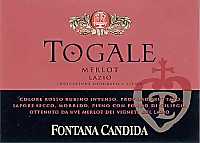
|
|
Togale 2005 |
|
| Fontana Candida (Latium, Italy) | |
| Grapes: Merlot | |
| Price: € 4.20 | Score: |
| Togale shows a brilliant ruby red color and nuances of ruby red, moderate transparency. The nose denotes intense, clean and pleasing aromas that start with hints of black cherry, blueberry and plum followed by aromas of violet, vanilla and carob. The mouth has good correspondence to the nose, a slightly tannic attack and however balanced by alcohol, good body, intense flavors. The finish is pretty persistent with flavors of black cherry and plum. A small part of Togale ages for 4 months in barrique. | |
| Food Match: Stuffed pasta, Sauteed meat, Roasted white meat | |
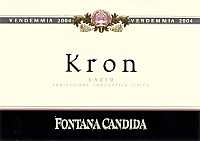
|
|
Kron 2004 |
|
| Fontana Candida (Latium, Italy) | |
| Grapes: Merlot (85%), Sangiovese (15%) | |
| Price: € 16.50 | Score: |
| Kron shows a brilliant ruby red color and nuances of garnet red, moderate transparency. The nose denotes intense, clean, pleasing and refined aromas that start with hints of plum and blueberry followed by aromas of black cherry, violet, vanilla, tobacco, cinnamon, carob and mace. The mouth has good correspondence to the nose, a tannic attack and however balanced by alcohol, good body, intense flavors, agreeable. The finish is persistent with flavors of plum, blueberry and black cherry. Kron ages for 12 months in barrique followed by 6 months of aging in bottle. | |
| Food Match: Broiled meat and barbecue, Roasted meat, Stewed meat | |
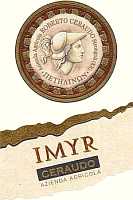
|
|
Imyr 2005 |
|
| Ceraudo (Calabria, Italy) | |
| Grapes: Chardonnay | |
| Price: € 13.00 | Score: |
| Imyr shows an intense golden yellow color and nuances of golden yellow, very transparent. The nose reveals intense, clean, pleasing and refined aromas which start with hints of banana, plum and toasted wood followed by aromas of citrus fruits, coffee, hawthorn, apple, grapefruit and hazelnut. The mouth has good correspondence to the nose, a crisp and smooth attack, however balanced by alcohol, good body, intense flavors. The finish is persistent with flavors of banana, apple and plum. Imyr ages for 6 months in barrique. | |
| Food Match: Roasted white meat, Stuffed pasta, Roasted fish | |
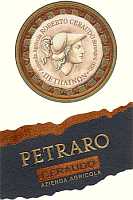
|
|
Petraro 2004 |
|
| Ceraudo (Calabria, Italy) | |
| Grapes: Cabernet Sauvignon | |
| Price: € 16.00 | Score: |
| Petraro shows an intense ruby red color and nuances of garnet red, little transparency. The nose reveals intense, clean, pleasing and refined aromas that start with hints of black cherry, black currant and plum followed by aromas of blueberry, dried violet, vanilla, tobacco, cocoa and eucalyptus. The mouth has good correspondence to the nose, a tannic attack and however balanced by alcohol, good body, intense flavors, agreeable. The finish is persistent with flavors of black cherry, plum and black currant. Petraro ages for 18 months in barrique. | |
| Food Match: Roasted meat, Braised and stewed meat, Hard cheese | |
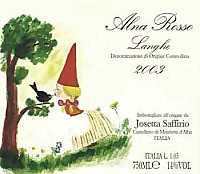
|
|
Langhe Rosso Alna 2005 |
|
| Josetta Saffirio (Piedmont, Italy) | |
| Grapes: Merlot (90%), Nebbiolo (10%) | |
| Price: € 15.00 | Score: |
| Langhe Rosso Alna shows an intense ruby red color and nuances of ruby red, little transparency. The nose reveals intense, clean, pleasing and refined aromas that start with hints of black cherry, plum and black currant followed by aromas of raspberry, blueberry, cyclamen and vanilla. The mouth has good correspondence to the nose, a tannic attack and however balanced by alcohol, good body, intense flavors. The finish is persistent with flavors of black cherry and plum. Langhe Rosso Alna ages for 12 months in cask. | |
| Food Match: Broiled meat and barbecue, Roasted meat, Stewed meat | |

|
|
Barolo 2003 |
|
| Josetta Saffirio (Piedmont, Italy) | |
| Grapes: Nebbiolo | |
| Price: € 28.00 | Score: |
| This Barolo shows a brilliant ruby red color and nuances of garnet red, moderate transparency. The nose denotes intense, clean, pleasing and refined aromas which start with hints of cherry, raspberry and plum followed by aromas of strawberry, violet, rose, vanilla, tobacco, licorice, chocolate, cinnamon and menthol. The mouth has good correspondence to the nose, a tannic attack and however balanced by alcohol, full body, intense flavors, agreeable. This Barolo ages for 24 months in cask and for 6 months in cement tanks followed by 6 months of aging in bottle. | |
| Food Match: Game, Braised and stewed meat, Roasted meat, Hard cheese | |
|
||||||||
|
DiWineTaste Polls
|
| |||||||
Privacy Policy | |||||||


| Copyright © 2002-2024 Antonello Biancalana, DiWineTaste - All rights reserved |
| All rights reserved under international copyright conventions. No part of this publication and of this WEB site may be
reproduced or utilized in any form or by any means, electronic or mechanical, without permission in writing from DiWineTaste. |